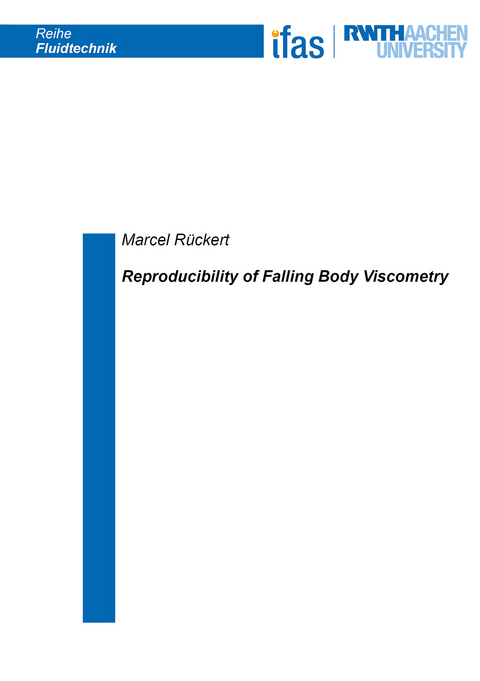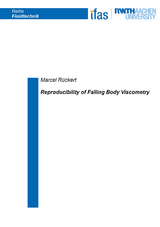Reproducibility of Falling Body Viscometry
Seiten
In this work, the reproducibility of falling body viscometry is investigated. For this purpose, a new continuous measuring method for pressure ranges up to 8,000 bar is developed, which is able to identify stationary falling conditions. In an analysis all influences acting on the falling body are investigated and promising falling body shapes are identified. With the aid of a numerical flow simulation and coupled adjoint optimisation, a falling body is developed for increased Stokes flow performance. By using a ferritic, corrosion-resistant steel, an inductive velocity detection over the complete measuring length as well as an active lifting of the falling body is made possible.
The newly developed method is suitable for the automated viscosity measurement of high- as well as low-viscosity fluids and thus covers the range from bio-fuels to hydraulic oil. Due to the innovative measuring principle, the velocity of the falling body can be continuously recorded and thus stationary conditions can be identified. By means of analytical and numerical methods, it can be shown that a falling body tends towards large eccentricities during the fall in a tube, which significantly increases its fall velocity. Furthermore, a variation of the falling body geometry shows that the falling body shape has a significant influence on the reproducibility of the measurements. The adjoint optimised body provides very good reproducibility and is suitable for the use with low-viscosity fluids. For high viscosity fluids it can be shown that fins on the lateral surface of the falling body have a small influence on the flow and a concentric fall can be realised.
The newly developed method is suitable for the automated viscosity measurement of high- as well as low-viscosity fluids and thus covers the range from bio-fuels to hydraulic oil. Due to the innovative measuring principle, the velocity of the falling body can be continuously recorded and thus stationary conditions can be identified. By means of analytical and numerical methods, it can be shown that a falling body tends towards large eccentricities during the fall in a tube, which significantly increases its fall velocity. Furthermore, a variation of the falling body geometry shows that the falling body shape has a significant influence on the reproducibility of the measurements. The adjoint optimised body provides very good reproducibility and is suitable for the use with low-viscosity fluids. For high viscosity fluids it can be shown that fins on the lateral surface of the falling body have a small influence on the flow and a concentric fall can be realised.
| Erscheinungsdatum | 30.06.2023 |
|---|---|
| Reihe/Serie | Reihe Fluidtechnik ; 113 |
| Verlagsort | Düren |
| Sprache | englisch |
| Maße | 148 x 210 mm |
| Gewicht | 213 g |
| Themenwelt | Sachbuch/Ratgeber ► Natur / Technik ► Technik |
| Technik ► Maschinenbau | |
| Schlagworte | Adjoint Solving • Falling Body Viscometry • Flow Optimisation • Laminar Flow • viscometry • viscosity |
| ISBN-10 | 3-8440-9077-0 / 3844090770 |
| ISBN-13 | 978-3-8440-9077-2 / 9783844090772 |
| Zustand | Neuware |
| Haben Sie eine Frage zum Produkt? |
Mehr entdecken
aus dem Bereich
aus dem Bereich
die wichtigsten Begriffe, Bautypen und Bauelemente
Buch | Softcover (2024)
Prestel (Verlag)
CHF 44,75
Buch | Hardcover (2021)
C. Bertelsmann (Verlag)
CHF 25,20
vom Kolosseum über die Akropolis bis zur Alhambra
Buch | Hardcover (2023)
DK (Verlag)
CHF 29,90




